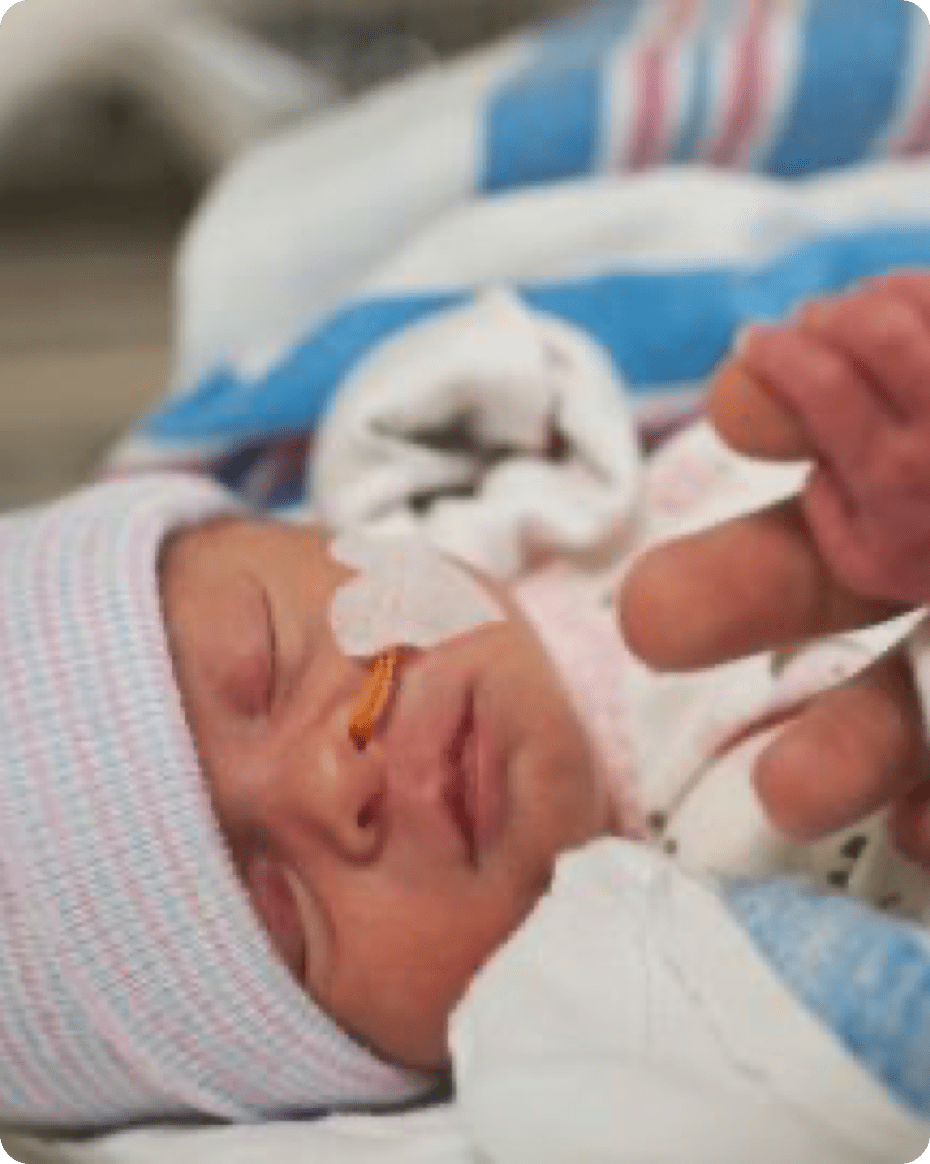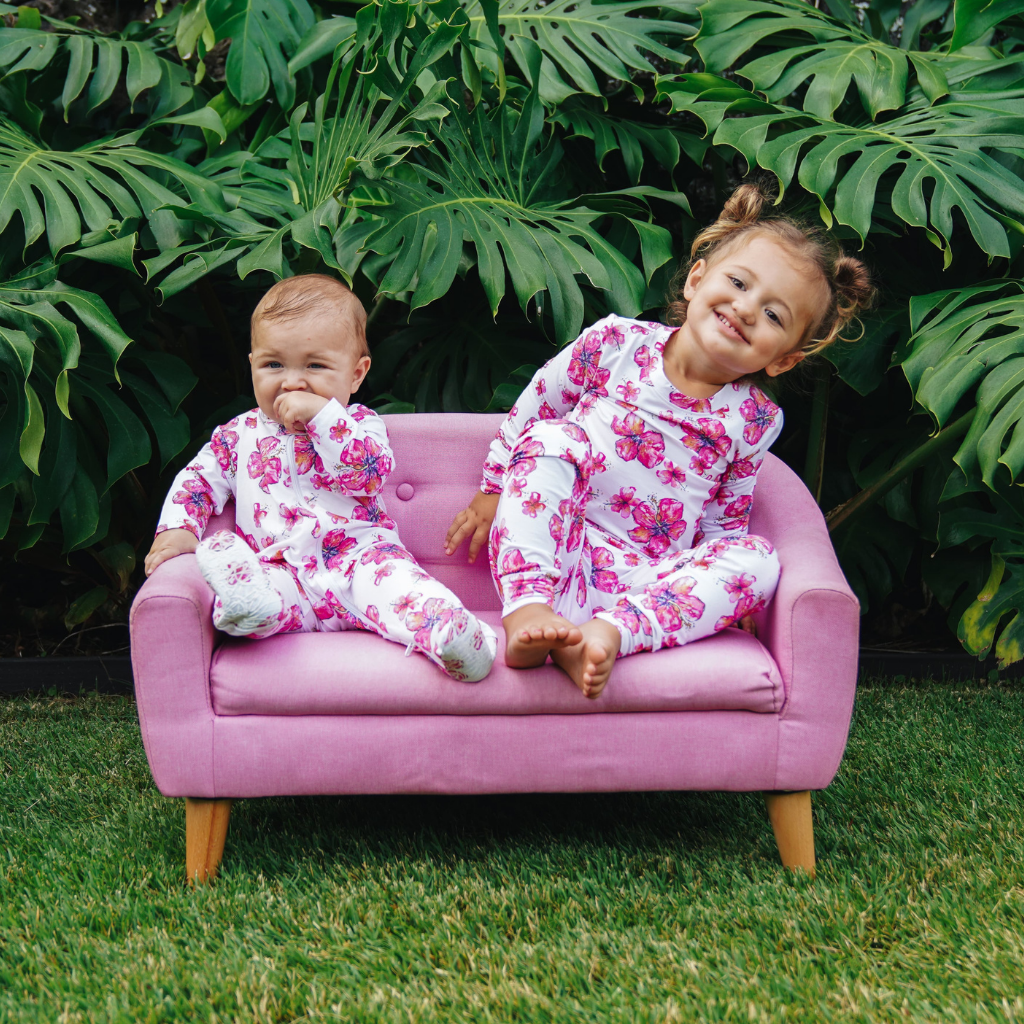Remember the first time you watched as the nurses in the hospital wrapped your newborn baby? I do! My son was wrapped so neatly in a blanket like a bundle (I wonder if that’s how the term ‘bundle of joy’ came about!).
Back from the hospital, I had such a hard time getting my son to sleep, and no matter how much I persisted, I could not wrap him up in the same way that the hospital had, all snug and warm.
For our frequent readers, you will know it was my sister in law that came to my rescue showing me how to swaddle (or wrap) my baby. I call her the swaddle master and teaching me how to swaddle was the best gift she could have given me.
In my journey as founder of Coco Moon Hawaiʻi, and as a mother of two, I have dedicated many hours of research on baby wraps and learned that wrapping a baby has numerous benefits, and that experts recommend it to parents at least until your baby is two to three months old.
To get us started, let’s talk about this history of swaddling:
Swaddling is a time-honored tradition that brings comfort and security to newborns. For centuries, parents have wrapped their babies in soft blankets, creating a cozy cocoon that mimics the womb's warmth and tightness. This practice of swaddling is designed to soothe babies by helping them feel secure as they transition into this new world.
Swaddling is a great way to help both baby and parents sleep better and get the rest they need. However, it’s crucial to learn the proper techniques to ensure baby’s safety, as swaddling isn’t meant to last forever. To wrap a newborn requires the right knowledge of the methods, which I’m going to share in this blog. But first, I’ll help you understand the benefits of wrapping your baby well.
What are the benefits of swaddling a newborn?

Promoting a better night’s sleep
When wrapped well, a baby is also known to sleep soundly and have a healthy sleep cycle, (which helps us new parents get our much needed sleep too!). Because swaddling mimics the feeling of being in the womb, this practice offers babies an extra level of comfort when they are new to this world.
Reducing the startle reflex
Babies are known to wriggle their hands and legs about, which may trigger the startle reflex when sleeping. All this wriggling can lead to a sudden break from a sound sleep (which is not healthy for the baby, or much fun for tired parents!). Swaddling is known to reduce the startle reflex, as baby’s hands are wrapped in the swaddle and cannot move to startle them awake.
Providing Comfort and Security for Baby:
Swaddling envelops your baby in a snug, secure wrap, replicating the feeling of being in the womb. This sense of comfort and familiarity can soothe your newborn, and make them feel more at peace. Swaddling also provides a comforting environment that can ease the transition to the outside world, making your baby feel safe and protected.
Easier for Feeding:
Swaddling can make feeding sessions more manageable for both breastfed and bottle-fed babies. By swaddling your baby before a feed, you help them remain calm and focused, reducing distractions and fidgeting. This can lead to more efficient and less stressful feeding experiences, promoting better feeding habits, and bonding between you and your baby.
Reducing SIDS
Wrapping a baby may also help to reduce the risk of SUDI (sudden unexpected death in infancy) and SIDS (sudden infant death syndrome). When wrapped in a blanket, the baby stays on their back, helping to prevent any sleeping accidents. Medical professionals recommend wrapping the baby until they are old enough to roll on to their tummy.
Choosing the Right Materials
Before we dive into the art of swaddling, let's gather the materials you'll need and best ways to prepare. Choosing the right blanket is crucial, and we recommend using breathable, soft bamboo muslin swaddles. Bamboo muslin swaddle blankets are not only gentle on your baby's skin but also provide the perfect amount of warmth without overheating your precious bundle of joy.
When preparing, swaddling begins with creating the right environment. Find a quiet, comfortable space with soft lighting to soothe your baby, and lay the blanket flat on a surface, with one corner folded down.

Now we begin the art of swaddling with this step by step guide!

Step 1: Fold the top corner of your blanket down and gently lay your baby in its center, with shoulders just below the fold line.
Step 2: Bring baby's arm alongside the body, slightly bent.
Step 3: Wrap the blanket over the baby's arm and tuck it securely under the body. As you do so, pull the blanket on the opposite side a little to keep it nice and snug
Step 4: Bring the bottom point of the swaddle up and over baby's feet. Meanwhile, place baby's opposite arm alongside body, slightly bent
Step 5: Tuck the blanket under baby's shoulder, leaving room for baby's hips to move freely
Step 6: Bring the remaining blanket over the baby's shoulder, toward the chest. Hold the blanket in place at center, forming a "V"
Step 7: Wrap remaining blanket around baby's body and tuck extra fabric into fold at center
These are the basic steps of wrapping the newborn in a cozy bundle. A few things to keep in mind when you wrap a newborn are:
Avoid swaddling too tightly, as it can hinder healthy hip development. As your baby grows and begins to roll over, it's time to transition away from swaddling to ensure their safety.
The baby wrap should be snug and not have too many layers, so as to prevent overheating. But the wrap also shouldn’t be too loose, as it can pose dangers to baby and increase the risk of SIDS.
Coco Moon Hawaiʻi baby swaddles are made from breathable, buttery soft muslin that doesn’t overheat your baby, and have the perfect amount of layers.
Safety:
Best Ages for Swaddling and When to Stop:
Swaddling is best during a baby's early weeks and months, as newborns up to 3 months old benefit from the way swaddling replicates the snugness of the womb. However, once baby begins to show signs of rolling over, which can begin anywhere from two to four months, it’s important to begin transitioning away from swaddling. Rolling over when tightly swaddled can be dangerous, so it’s essential to explore safer sleep methods.
Safe Sleep Environments for New Babies:
When placing your baby to sleep, whether that is swaddled or not, it’s important that the sleep environment is safe. Your baby’s crib or bassinet should be free from pillows, blankets, stuffed animals, or any loose bedding that could cause suffocation hazards. Essentially, baby should be on a firm, flat mattress with a tightly fitted sheet for ultimate safety.
Using Different Swaddle Materials for Different Seasons:
We’ve mentioned that using a swaddle made of bamboo muslin is the best material for swaddling your baby as it’s lightweight, breathable, and gentle on baby’s skin. These are perfect for all seasons, as the fabric allows heat to escape to prevent overheating. During the colder months, we recommend adding a layer underneath the swaddle to keep baby warm. But please keep in mind, monitoring your baby’s body temperature is essential to ensure they are not too hot or too cold.

Troubleshooting Issues:
If you’re having issues like baby breaking free from the swaddle or baby seems to be experiencing some discomfort, there are a few things you’ll want to double check:
Ensure Proper Hip Positioning: Make sure your baby's hips are positioned correctly. The legs should be able to bend at the hips and move freely. Incorrect hip positioning can lead to discomfort and hip dysplasia.
Check for Over-Tightening: Ensure you're not swaddling too tightly. Your baby's chest should rise and fall comfortably with each breath.
Practice Makes Perfect: Swaddling is a skill that gets better with practice. Don't be discouraged if it doesn't go perfectly at first. Keep practicing, and you'll become more proficient.
Seek Professional Guidance: If you're uncertain about your swaddling technique or if your baby continues to show signs of discomfort, consult with a pediatrician or a baby care expert. They can provide guidance and ensure your baby's safety and comfort.
Swaddling not right for you? Here are some swaddling alternatives:
If traditional swaddling isn't your preference or doesn't work for your baby, don’t stress! Every baby is different, and there are still alternatives to consider. Layette gowns are a great way to provide a secure feeling while allowing more freedom of movement (plus they make those late-night diaper changes much easier!) These products can be an excellent choice if you still think your baby could benefit from a similar, cocoon feeling, and our Coco Moon layette gowns made out of a gentle bamboo fabric blend are a great place to start.
Swaddling is a time-tested practice that provides numerous benefits for newborns, from better sleep to enhanced comfort and security. Seeing if swaddling works for your family is a great thing to try. And by following our step-by-step guide and considering the safety precautions, you can master the art of swaddling and give your baby the warmth and love they need to thrive!
Check out our full range of adorable, bamboo muslin swaddles to get you started with a material you know is safe and comfortable for your baby.









